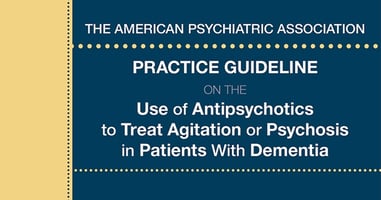APA-AAN Work Group Releases New Dementia Quality Measures
 |
The document, “Updated Dementia Management Quality Measures,” was written by a 26-member work group convened by the two associations. It covers nine broad areas of assessment, diagnosis, and treatment of dementia. The measures could be incorporated as part of the Medicare Quality Payment Program, as well as into PsychPRO, APA’s new mental health registry.
An especially important and potentially controversial addition to the set is the measure assessing the percentage of patients who are informed that they have been diagnosed with dementia.
“Because we do not currently have treatments that can definitively alter the course of dementia, clinicians are sometimes apprehensive about revealing a diagnosis of dementia because of the concern that patients will be very demoralized," said psychiatrist Robert Roca, M.D., M.P.H. (pictured above), co-chair of the APA-AAN work group. “In fact, the data show that people want to know the diagnosis and want to be able to make plans. Clinicians need not be afraid to take this subject up directly with patients and their caregivers. For the most part, people don’t want this information hidden from them and want to be able to make appropriate plans.”
The original Dementia Management Quality Measurement Set was developed and published in 2013 by AAN as part of the AMA’s Physician Consortium for Performance Improvement (PCPI). In 2015, the AAN and the APA formed the multidisciplinary work group to improve the original measures and to identify areas for new ones.
“APA worked closely with the AAN to come up with a set of measures that would reflect the state of the art in dementia care,” Roca said. “We are hoping that members who take care of persons with dementia will look at these measures as useful guides to what constitutes quality of care.”
A summary of the measures can be accessed here. For related information see the Psychiatric News article “APA Releases ‘Guideline Watch’ for Dementias.”





